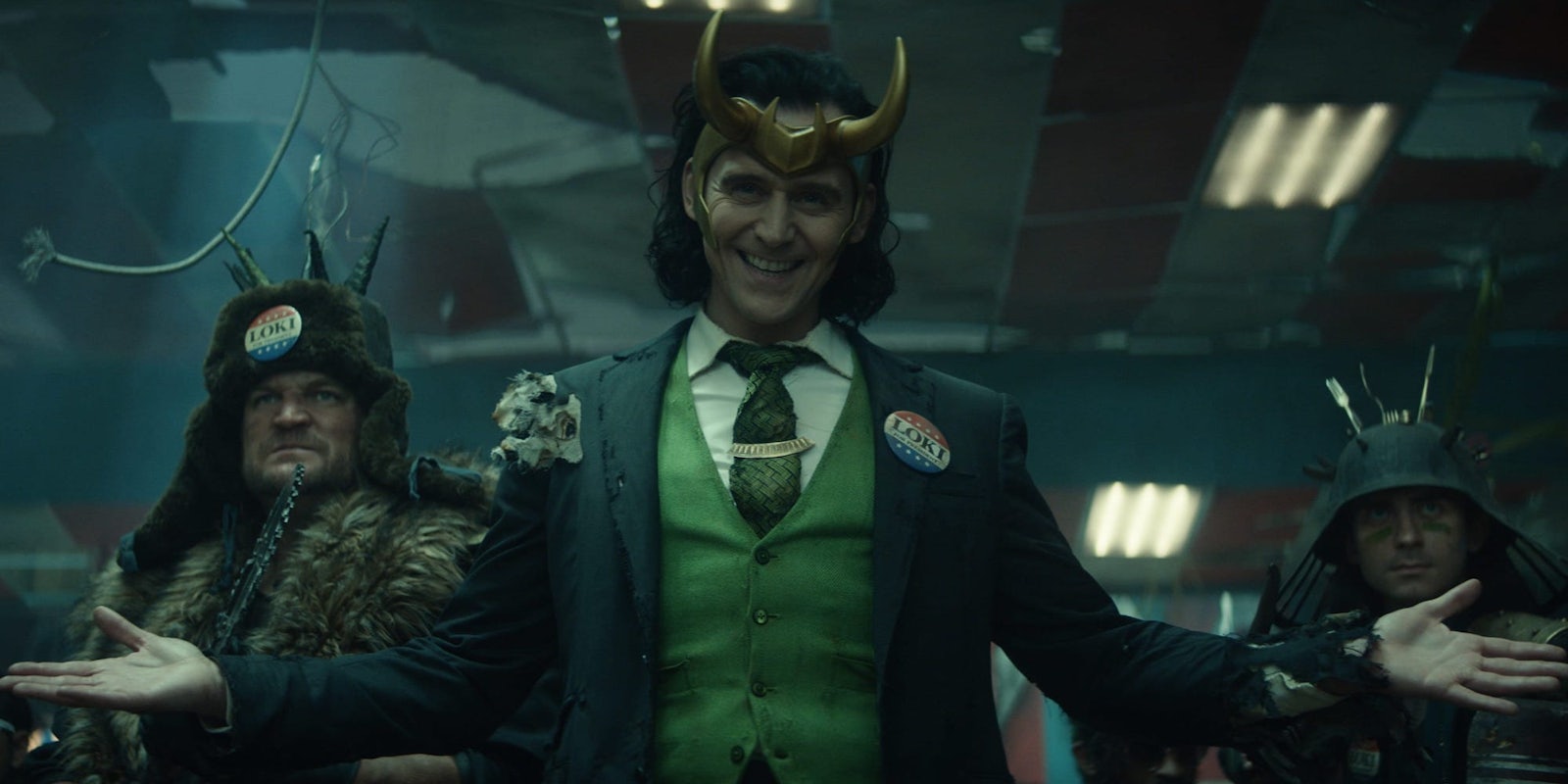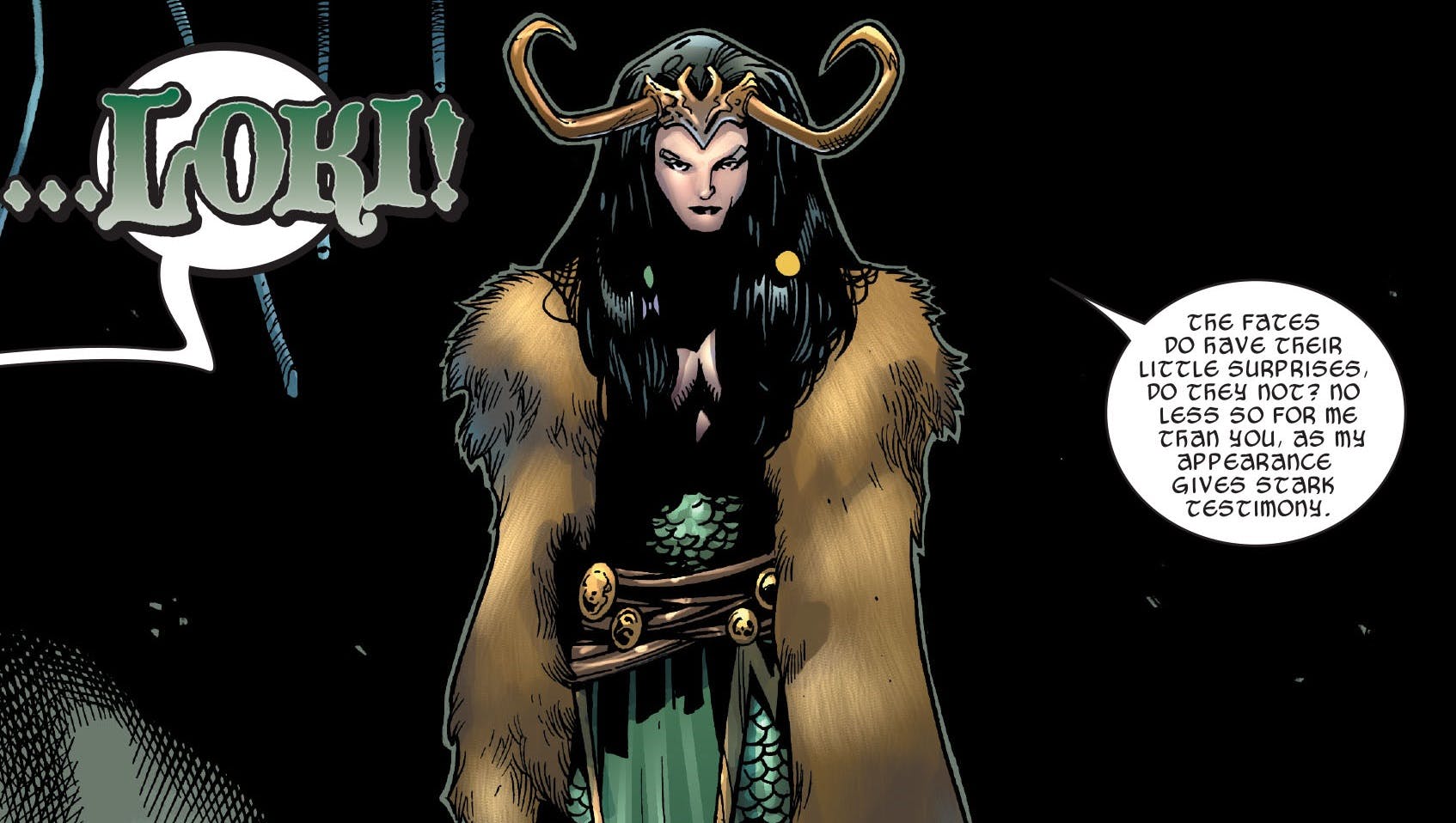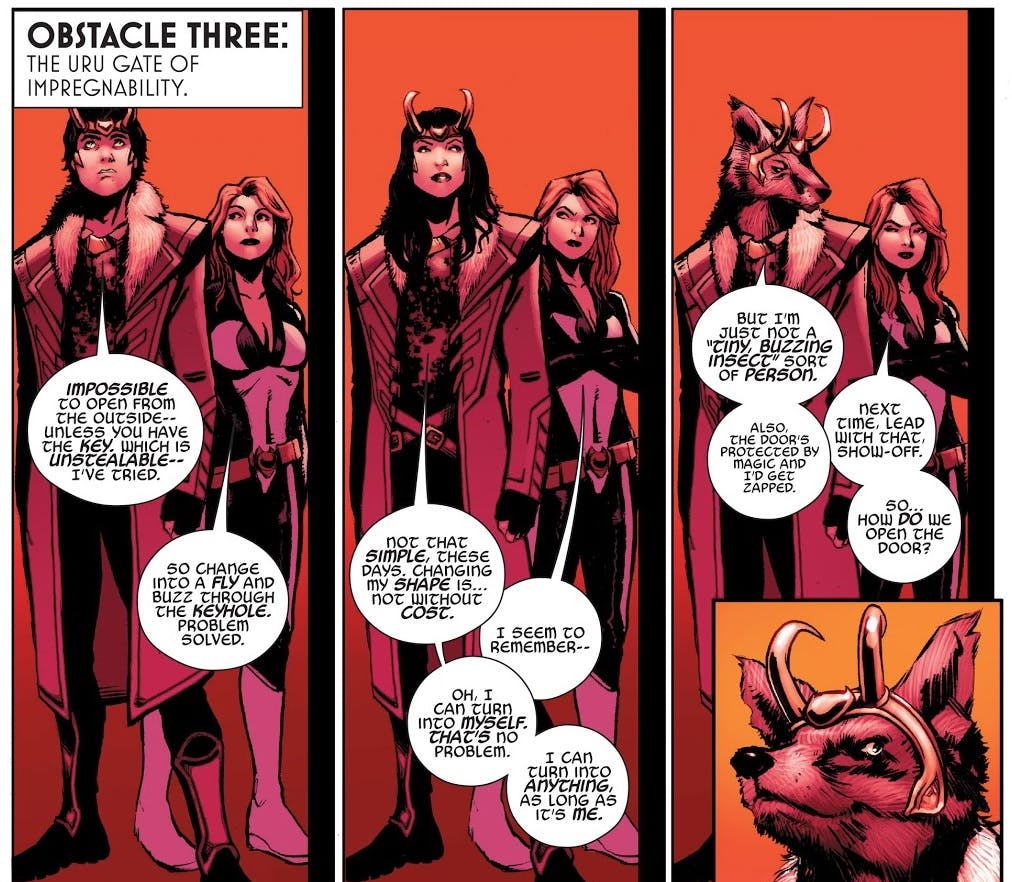A few days before Loki premiered on Disney+, Marvel dropped its first hint that Loki is genderfluid in the MCU. How will this actually pan out on-screen? Episode 2 gives us one possible answer, but regardless, many fans already agree that Loki’s gender is neither static nor binary. He’s already portrayed this way in Marvel comics, and at this point, Disney is basically playing catch-up.
Since his debut in Thor (2011), Tom Hiddleston’s Loki has inspired a ton of fanfic, art, and cosplay exploring the character’s gender identity, drawing both from Norse mythology and from Loki’s portrayal in Marvel canon: a sneakily playful foil for macho heroes like Thor. Loki’s mind, body, and soul are magic and malleable, refusing precise categorization while resonating with many nonbinary and genderfluid fans. To dig a little deeper into this idea, I spoke to some academics with insight into Viking gender roles and sexuality—and some experts within Marvel fandom.
Loki’s role in Norse mythology
Modern media typically portrays Viking life as a tough warrior society. This image has been adopted and exaggerated by white supremacists, envisioning medieval Scandinavia as a homogenous white culture with restrictive gender roles. It probably won’t surprise you to learn that this is inaccurate, both in terms of everyday life and the role of gods like Loki and Odin in Norse folklore.
“A lot of the gods have very queer aspects to their personalities,” explained Dr. Marianne Moen, an academic at the Museum of Cultural History in Oslo. “There’s a lot of transgressing of what we would consider binary divides. And there’s a lot of gender play in the mythology, a lot of people transgressing.” Along with Loki’s habitual shapeshifting, there are stories where Odin turns into a woman and takes male lovers, and where Thor cross-dresses for comedic effect.
“Loki has a very genderqueer, in our way of thinking, aspect to his personality,” Moen told the Daily Dot. But at the same time, “you end up losing the nuances” if you try to ascribe modern definitions of gender and sexuality onto ancient cultures. “You can’t really apply our way of thinking to the past without misunderstanding it.”
There’s plenty of evidence for people existing outside of binary gender roles throughout history. But the idea of defining oneself as straight/cis/LGBTQ+ is a modern concept. Different cultures used different terminology to describe their experiences, and a person in medieval Scandinavia obviously wouldn’t describe Loki in modern terms.
Our image of Loki mostly comes from a pair of texts known as the Poetic Edda and the Prose Edda, published in 13th-century Iceland. Both drew from pre-existing folklore, depicting Loki as the archetypal trickster god. A capricious figure who entertains the audience with his cunning schemes and biting wit—but who can also be dangerous and evil, perpetually at odds with the other gods.
Loki is sometimes portrayed as the son of a jötunn (ice giant), an idea we see in the Thor movies. (In fact the MCU’s Loki now goes by the patronym “Laufeyson,” rejecting his adoptive Asgardian family.) Loki is also the parent of several mythological figures: Hel (the queen of the underworld), Fenrir (a giant wolf), Jormungandr (a gargantuan serpent), and Sleipnir (Odin’s eight-legged horse). The first three children had a different mother, but Loki gave birth to Sleipnir after turning into a mare and mating with a stallion; one of several tales where Loki changes shape, species, or sex.
For more insight into Viking gender roles, I got in touch with Professor Neil Price at the University of Uppsala, author of The Viking Way.
“The societies of Viking-Age Scandinavia very much recognized a gender binary,” he explained in an email. “However, there are also indications of other gender constructions.” The relevant sources are unavoidably ambiguous: medieval sagas written centuries later, or burial sites where skeletal remains were classified as male or female, but nearby artifacts correspond with different gender roles.
Some of those sagas include warriors who are introduced as women, but are later described using masculine pronouns. There’s also written evidence of laws against men dressing in women’s clothing and vice versa, implemented by Christian rulers. Were these laws a new, Christian invention, or did they reflect pre-Christian values as well? It’s hard to say. But it does mean there was something to restrict in the first place. People were rebelling against externally-assigned gender roles, and being punished for doing so.
In the case of Loki, Price agrees that “there is a clear element of gender ambiguity about him.” In line with his love of tricks and disguises, Loki is a consistently inconsistent character. “He shifts and flows, his mind and personality take unexpected paths, and sometimes his body follows and changes in the process.”
In the Marvel franchise, Odin has gone the same way as the version of Zeus we see in Disney’s Hercules: a paternal figure with unexamined Christian overtones. Marvel fans might be surprised to hear that Odin was traditionally depicted as a ruthless and enigmatic character, more in line with the version we see in Neil Gaiman’s American Gods. Like Loki, he can be manipulative and tricky. And like Loki, he wields feminine magic.
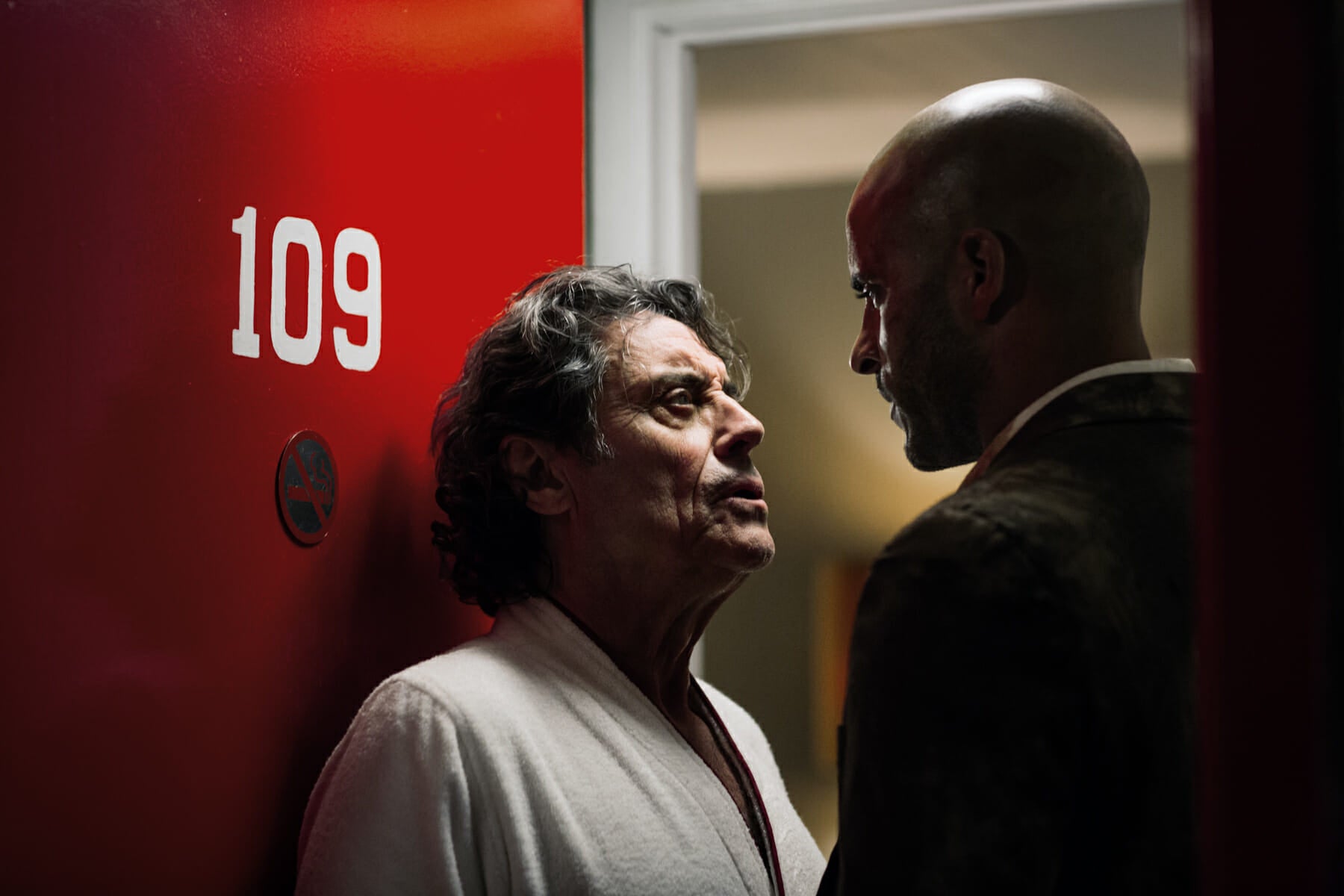
According to Professor Price, several medieval sources describe magic as something that was only “proper” for women to perform. Magical rituals and equipment sometimes had obvious undertones of female sexuality.
“Male sorcerers were seen as being effeminate, with a strong suggestion of homosexuality along with other supposedly ‘unmanly’ qualities such as cowardice and dishonor.” When men performed magic, “they entered a special state called ergi… which set them apart from other men.” They were outsiders, but they were also seen as very powerful. So as Price puts it, these sorcerers would be “a Viking-Age equivalent for what we would call queer identities.”
This actually lines up with the central conflict of the first Thor movie. Loki learns magic from his adoptive mother Frigga, but his powers are disrespected and undervalued by Asgard’s warrior culture. In turn, this illustrates part of Loki’s appeal to a modern, genre-savvy audience: a character who gains power and freedom through queer-coded villainhood.
Loki’s evolution in Marvel comics
Loki’s early Marvel characterization leaned more toward cackling malevolence than the sympathetic tone of recent comics. Caught in a constant cycle of resentment and betrayal with Asgard, he’s a power-hungry supervillain whose allegiances can turn on a dime.
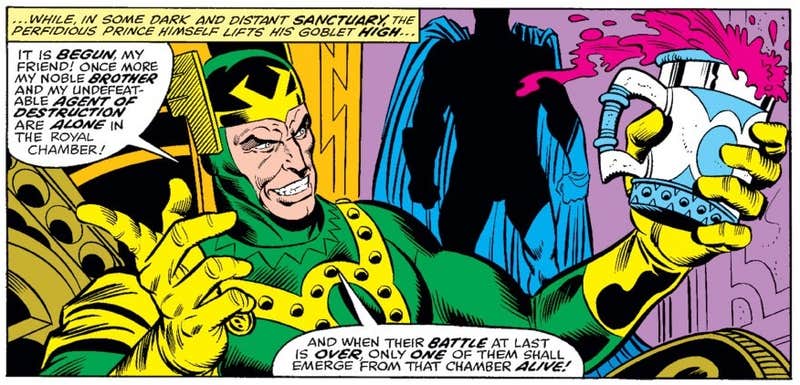
Old-school Loki can be interpreted as a queer-coded villain, and like similar figures in Disney cartoons (Jafar, Scar, Hades), that subtext was later reclaimed by LGBTQ+ fans. In an email to the Daily Dot, a Loki fan named JC explained, “The fact that his power is in lies and trickery instead brute strength connotes a kind of femininity, in a horribly historically homophobic kind of way.” Physically and thematically, Loki stands in opposition to “the typical all-American hero.” And while this wasn’t intended as a positive trait, it resonated with a lot of readers. “I think Loki fans always see a lot of ourselves in Loki,” says JC. “The way he is so off-kilter from Asgardian society, and the pain of that, and the subsequent defiance including all his bad decisions—it feels familiar.”
Canonically speaking, Loki’s gender first became a talking-point in 2008. In the “Lady Loki” storyline, Loki took over a body created for Thor’s friend Lady Sif. Now explicitly depicted as a woman, this was different from previous stories where Loki temporarily changed shape as a disguise. “I see this as a rebirth, my brother,” she tells Thor.
Lady Loki offered a vampy riff on the character’s typical appearance, wearing dark lipstick and a slinky green costume. Otherwise, she was motivated by the same ambitions and desires as before.
This wasn’t treated as a transition story in the contemporary sense of the term, which may explain why Marvel allowed Lady Loki to happen in the first place. Elsewhere, Marvel still avoids putting trans and nonbinary characters in major roles. Loki circumvented this bias due to her magical, mythical origins, the implication being that in 2008, the publisher just didn’t perceive this as a story about gender identity. It was just gods being gods. By contrast, when Iceman came out as gay in 2015, this was treated as a very big deal by readers, the media, and Marvel itself.
About a year later, Loki returned to his previous, masculine appearance. But Lady Loki had set a precedent for the character’s flexible identity. Loki’s next big storyline was a fantasy epic where he splits into two forms: a bird with Loki’s old, villainous memories, and a child who embarks on a new life. Kid Loki later joined the majority-queer cast of Young Avengers and aged up into a teenager, reemerging as an explicitly queer and genderfluid character. This coincided with Loki’s surge in popularity thanks to the Avengers movies.
The 2014 comic Loki: Agent of Asgard catered directly to Loki’s queer fanbase. “Loki is bi and I’ll be touching on that,” writer Al Ewing confirmed at the time. “He’ll shift between genders occasionally as well.” This version of Loki was a young adult with a softer personality and reduced superpowers. “I can turn into anything, as long as it’s me,” Loki remarks at one point, cycling between different forms.
Speaking to nonbinary Loki fans, this comic came up as a standout moment in the character’s journey. Highlighting the way Loki “resonates with the queer experience on multiple levels,” a longtime fan named Adam praised Agent of Asgard’s multilayered nature. They explained: “Loki attempts to break free of their evil origins and reinvent themselves, only to discover that Asgard’s leadership is actively working against this goal to preserve their own future.” So Agent of Asgard is an anti-establishment story about Loki’s quest for self-determination, doubling as a very relatable queer allegory:
“So much of being queer and non-binary and just different from the world around you is about the experience of having your identity imposed upon you or not being allowed to grow and change as you discover yourself. Queer people have been put in restrictive boxes for hundreds of years and often used in cultural narratives as villains, as cautionary tales etc. and Loki both navigates those challenges and aggressively rejects them in their genderfluidity and their self-exploration.”
Loki’s canon evolution overlapped with a new era of Marvel fandom. The first phase of the MCU saw an explosion of activity, with Loki as a notably popular figure—a charismatic villain who could also be interpreted as a misunderstood outsider. Fans fleshed out his story with cues from Norse folklore, including Loki’s jötunn heritage and his flexible relationship with sex and gender. So the Agent of Asgard comics actually echoed something that fans were already creating for themselves.
Fannish views of Loki are far more complex, transgressive, and creative than anything we might see from Disney or Marvel. Purely in terms of stats, he’s one of the top 10 Marvel characters on the fanfic site Archive of our Own. Loki appears in around 55,000 fanfics, 900 of which are tagged “genderfluid Loki.” He’s also a predictably popular character for cosplayers, offering a spectrum of gender presentations and costumes to explore—along with Loki’s blue-skinned jötunn ancestry, which inspired a subgenre of fanmade imagery involving scarification, furs, and gold jewelry.
“For me Loki’s appeal comes from the inability to put him in a box as he has been both man and woman, hero and villain, king and outcast, a child, a unicorn and so much more,” explains Ikol Cosplay, who began cosplaying as Loki in 2012, embodying through countless remixes of the character.
“It’s just nice to have a character who gets to revel in his genderqueerness,” added JC, the fan who had strong opinions about Loki’s history as a queer-coded villain. “Loki, in transformative works, can be a playground for genderfuckery. When we make art or stories about Loki, we all get to put a bit of our own queerness in him. Which I think is appropriate, for the god of stories.”

